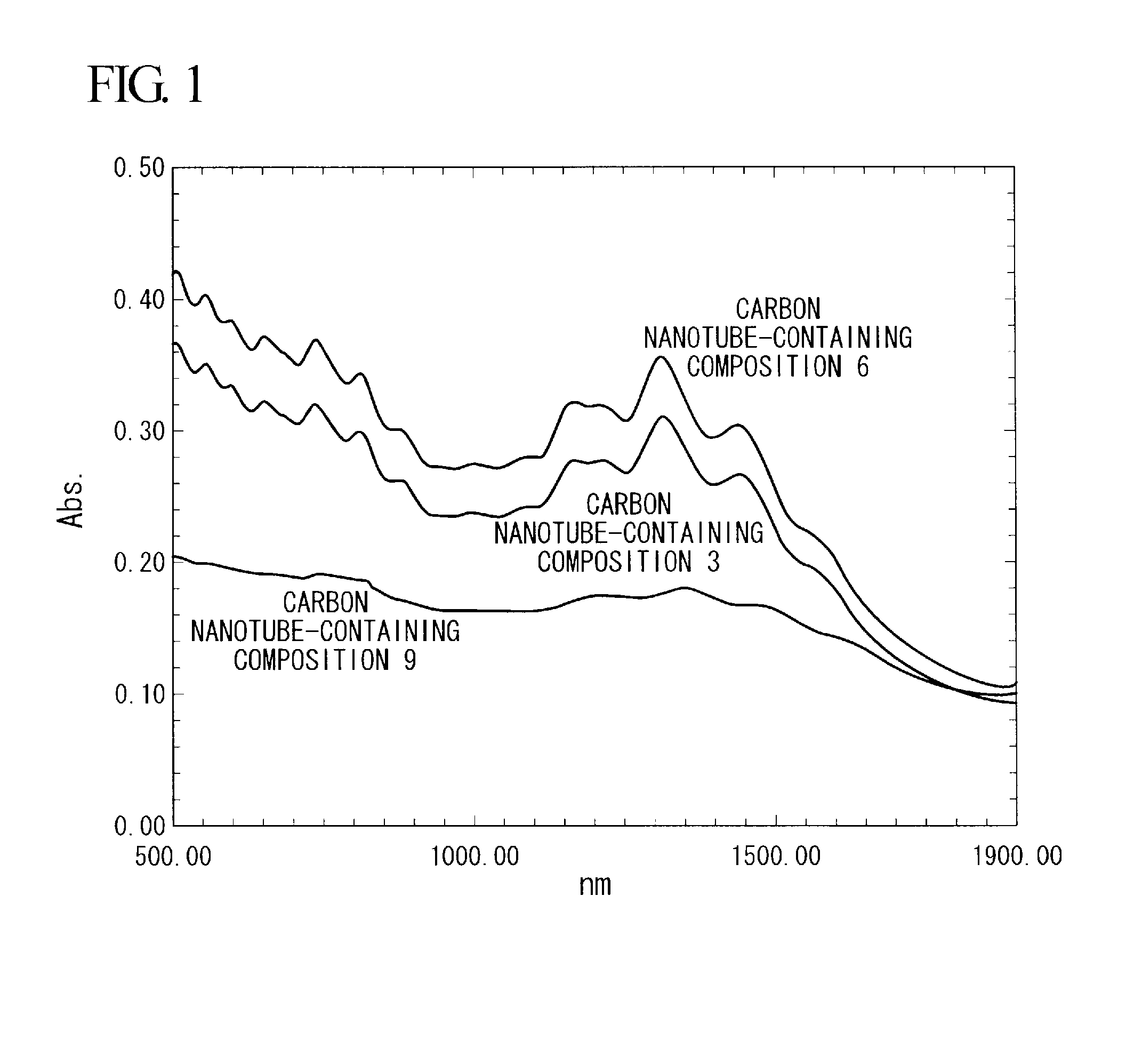Carbon nanotube-containing composition, composite, and methods for producing them
- Summary
- Abstract
- Description
- Claims
- Application Information
AI Technical Summary
Benefits of technology
Problems solved by technology
Method used
Image
Examples
production example 1
Urethane Compound 1
[0108]Three moles of 2-hydroxytrimethylene dimethacrylate were reacted with 1 mole of triisocyanate composed of a trimer of hexamethylene diisocyanate to obtain urethane compound 1.
production example 2
Urethane Compound 2
[0109]Two moles of 2-hydroxytrimethylene dimethacrylate were reacted with 1 mole of hexamethylene diisocyanate to obtain urethane compound 2.
production example 3
Urethane Compound 3
[0110]Two moles of decaethylene glycol methacrylate were reacted with 1 mole of toluene-2,4-diisocyanate to obtain urethane compound 3.
PUM
| Property | Measurement | Unit |
|---|---|---|
| Transmittivity | aaaaa | aaaaa |
| Angle | aaaaa | aaaaa |
| Angle | aaaaa | aaaaa |
Abstract
Description
Claims
Application Information
 Login to View More
Login to View More - R&D
- Intellectual Property
- Life Sciences
- Materials
- Tech Scout
- Unparalleled Data Quality
- Higher Quality Content
- 60% Fewer Hallucinations
Browse by: Latest US Patents, China's latest patents, Technical Efficacy Thesaurus, Application Domain, Technology Topic, Popular Technical Reports.
© 2025 PatSnap. All rights reserved.Legal|Privacy policy|Modern Slavery Act Transparency Statement|Sitemap|About US| Contact US: help@patsnap.com



